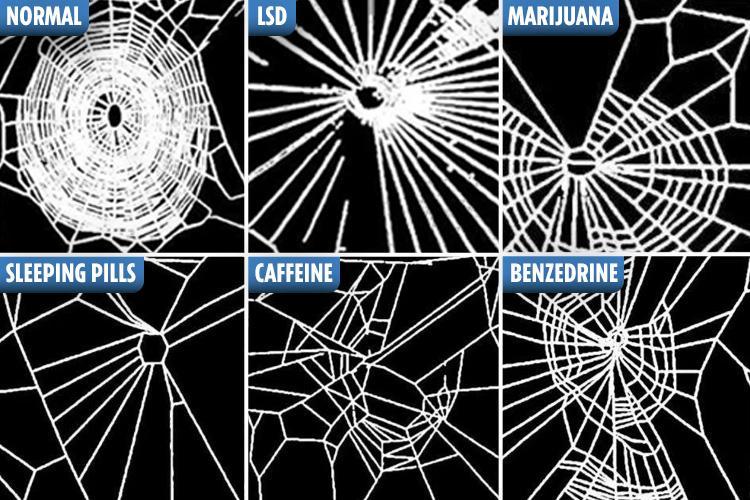But to the point I made here before you decided to go ex-wife on me and bitch about me proving you wrong in another thread..
The libertarian woo woo article stated it was a good thing homosexuals are celebrated because they used to be treated like potential "predators". Well:
http://www.bpnews.net/14145/homosexuals ... xual-abuseWhile a homosexual cannot automatically be considered a child molester, nevertheless there is cause for concern, Judith Reisman, president of the Institute for Media Education in suburban Louisville, Ky., and a social researcher who has studied sexual behavior for 25 years, stated in a May 2001 article in Baptist Press.
Reisman noted, first, that 17-24 percent of boys are abused by age 18, nearly as many as the 25 percent of girls. Then, she noted, since heterosexuals outnumber the homosexual population about 44 to 1, as a group the incidence of homosexuals molesting children is up to 40 times greater than heterosexuals.
"You're looking at a much higher rate of abuse," said Reisman, a former university research professor who had completed a study titled, "Crafting Gay Children." Department of Justice data at the time showed the rate of abuse by homosexuals as "off the charts," she said.
An extensive analysis titled "Homosexuality and Child Sexual Abuse" by Timothy J. Dailey, Ph.D., senior fellow for culture studies at the Family Research Council in Washington, is available on the Internet at www.frc.org/get/is02e3.cfm.
Dailey, in his study spanning 13 pages and 76 footnotes, wrote, "Homosexual apologists admit that some homosexuals sexually molest children, but they deny that homosexuals are more likely to commit such offense. After all, they argue, the majority of child molestation cases are heterosexual in nature. While this is correct in terms of absolute numbers, this argument ignores the fact that homosexuals comprise only a very small percentage of the population."
Referencing "the 10 percent fallacy," Dailey noted, "Studies indicate that, contrary to the inaccurate but widely accepted claims of sex researcher Alfred Kinsey, homosexuals comprise between 1 to 3 percent of the population." Among such studies, Dailey wrote, are those in the journal Demography in May 2000, in the journal Family Planning Perspectives in March/April 1993 and the journal Archives of Sexual Behavior in 1993.
Thus, Dailey wrote, "The evidence indicates that homosexual men molest boys at rates grossly disproportionate to the rates at which heterosexual men molest girls."
Dailey concluded his article by noting: "For too many boys it is already too late to protect them from those who took advantage of their need for love and attention. All too many later perpetrate the abuse by themselves engaging in the sexual abuse of boys. Only by exposing the lies, insincere denials, and deceptions -- including those wrapped in scholastic garb -- of those who prey sexually on children, can we hope to build a wall of protection around the helpless children among us."
Yet the erroneous assertions abound. In a story that aired on CBS' "60 Minutes" in April 2001, for example, correspondent Lesley Stahl asserted that the FBI and several clinical studies published in reputable journals report that homosexual men are not more likely to sexually abuse boys.
"In fact," Stahl asserted, "the largest database of child molesters in the country shows that those who molest boys are over three times more likely to be heterosexual in their adult relationships than homosexual."
But Reisman, in the Baptist Press article, pointed to figures from a 1991 population study by the U.S. Department of Commerce. The study showed that 8 million girls were abused by age 18 by heterosexual men, a ratio of 1 victim to 11 adult men -- while 6 million to 8 million boys were abused by age 18 by 1 million to 2 million adult homosexuals, a ratio of 3 to 5 victims for every gay adult.
Homosexuals are far more likely to be abusers of teenagers and children (pederast and pedophile) than people of normal heterosexuality. So it seems odd one would defend celebrating sodomy by arguing we used to worry this aberrant behavior could lead to victimization of minors.
But then one might claim predator is a broad term and could apply to adults as well. True that.
https://onenewsnow.com/culture/2015/12/ ... ly-violentCDC’s National Intimate Partner and Sexual Violence Survey is a first-of-its-kind study geared to determine the difference between the victimization of men and women by sexual orientation. The results show that men and women involved in homosexual behavior undergo much higher rates of sexual violence than men and women who are heterosexual.
Surprising to many, homosexual women experience more violence than men. According to the study, a whopping 44 percent of lesbians were either raped, experienced physical abuse, and/or were stalked by their intimate partners during their lifetime. Even more shockingly, 61 percent of bisexual women endured such violence from their partners.
It is also reported that 37 percent of bisexual women indicated they were stalked, which is more than double the rate that heterosexual women experience from their male partners. Furthermore, the CDC found that 37 percent of bisexual women were injured during the rape, physical violence, and/or stalking that they experienced at the hands of their sexual partners.
Tragically, 48 percent of bisexual women who reported that they were raped said that their first experience of being raped occurred when they were adolescents between the ages of 11 and 17.
The research also shows that 26 percent of homosexual men experienced rape, physical violence and/or stalking by their intimate partners. It’s even higher for bisexual men, who experience these types of assaults at a rate of 37 percent.
Refusing to interpret the numbers?
Refuting many of the claims by LGBT activists that homosexual behavior is a natural biological condition, the CDC report found that a large percentage of homosexual transgenders and bisexual women experienced sexual violence during their childhood years, which could have likely resulted in their choices in adulthood to adopt a homosexual lifestyle. Even though the government agency would not make an official determination that such early exposure to sexual violence was the cause of men and women ultimately choosing to engage in homosexual behavior, the statistics themselves appear to point to such a connection.
However, despite the numbers indicating otherwise, the homosexual activist organization Human Rights Campaign (HRC) claims that “poverty, stigma, and marginalization” are the cause of sexual violence.
"We also face higher rates of hate-motivated violence … the ways in which society … stigmatizes our relationships can lead to intimate partner violence that stems from internalized homophobia and shame," the HRC alleges.
However pro-family media outlets point out that those advocating traditional values are quick to bring light to the fact that those engaging in homosexual behavior often come from a violent past.
“[C]ritics of the gay agenda say violence is intrinsic to the inner-conflicted homosexual orientation,” Lifenews.com’s Mark Hodges reports. “[C]ritics say sodomy itself is a violent act of hate, not love, and the high rate of violence among homosexuals is not surprising.”
Even LGBT leaders have conceded that those in the homosexual community tend to ignore the prevalence of sexual violence between its members.
"Until recently, [LGBTQ] intra-community sexual assault went largely unacknowledged, particularly for women who have sex with women," National Center for Lesbian Rights Reproductive Justice Fellow Lauren Paulk admitted. "A particularly disturbing dynamic arises when the assaults are perpetrated by other LGBT community members."
Paulk says that the LGBT community has rationalized or ignored such violence for various reasons.
“Denial, misrecognition and the dismissal of outside-the-community concern as latent homophobia are examples of responses to sexual assault that occurs between members of the LGBT community," the homosexual activist explained. "Survivors of assault may not know where to turn, either because they fear they will not be believed or supported, or because they do not want to malign another member of the community or reinforce negative stereotypes."
So going back to the original claim made by this libertarian writer..
"All of it is an awesome reflection of a positive cultural shift toward public inclusion of a class of people who were once treated like predators and sex fiends."
Why should we "include" a class of people who engage in behavior that predisposes them to sexual assault and violence? Where does that make sense?
I look forward to your womanlike bitching about this one in yet another unrelated thread.


